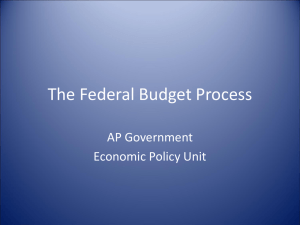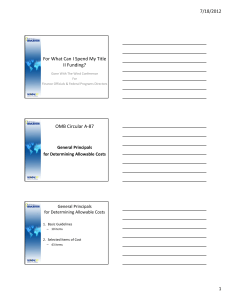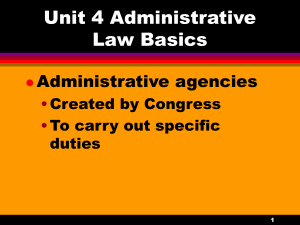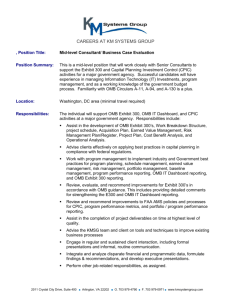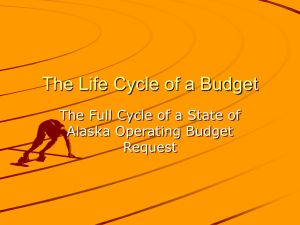administrative law - National Paralegal College
advertisement
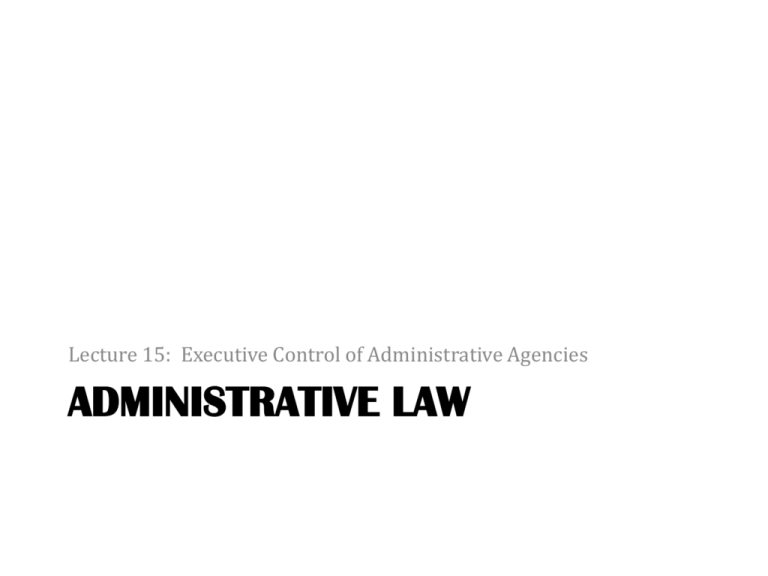
Lecture 15: Executive Control of Administrative Agencies ADMINISTRATIVE LAW • Like Congress, the President has a variety of powers and techniques he can use to oversee and influence the operations of administrative agencies. • No specific provision of the Constitution for executive authority over administrative agencies. – Presidents have cited the following provisions of Article II: oSection 1 – invests the president with executive power; oSection 2 – provides that the president is the commander-in-chief of the armed forces; oSection 2 – gives the president the appointment power; oSection 3 – obligates the president to take care that laws be faithfully executed; and oSection 2 – authorizes the president to require the opinions in writing of the heads of the executive departments. Appointment Power • Article II, Section 2, Clause 2 – Vests power in the President to appoint officials to the federal government. These appointees normally share the President’s policy preferences and feel some commitment to advancing his policies. • One of the most important instruments of executive control. Principal Officers: • High-level officers of the government that serve directly under the President (e.g., Secretary of State). • Must be approved by the Senate. Buckley v. Valeo • Congress tested the limits of the Appointments Clause in 1974 when it passed a statute creating the Federal Election Commission. • The statute required that four of the FEC’s six voting members would be appointed by the Speaker of the House and the President pro tempore of the Senate. • The Supreme Court struck down the legislation. • The court explained that the constitutional term “Officers of the United States,” identifying those officeholders who must be chosen pursuant to the Appointments Clause, includes all appointees exercise significant authority pursuant to the laws of the United States, such as rulemaking, adjudication, or enforcement functions. Thus, the FEC, a typical agency wielding all of those powers, was clearly covered by the clause. Executive Order • An executive order is a directive issued by the president or a governor that implements a policy but need not be passed by a legislature. • Example: President George H.W. Bush and Bill Clinton each issued orders instructing agencies to minimize litigation by making liberal use of settlement and alternative dispute resolution. Office of Management and Budget(OMB) • OMB has primary responsibility for formulating the annual executive budget which the President transmits to Congress. In performing this task, the OMB receives budget requests from the individual agencies and modifies them in accordance with the Administration’s policies. • OMB also reviews agencies’ requests for substantive legislation. Paperwork Reduction Act • Provides that OMB must approve any new information demand that an agency wishes to impose on the private sector. Power Over Litigation • Department of Justice (DOJ) is headed by the U.S. Attorney General, who is appointed by the President with Senate approval. • Presidential administration can exert influence over administrative agencies in the selection of the regulation it chooses to defend and the enthusiasm with which it defends them. – If the President does not enforce a law, it does not “exist.”
